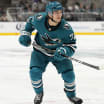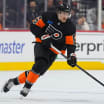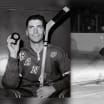Legendary hockey writer Stan Fischler writes a weekly scrapbook for NHL.com. Fischler, known as "The Hockey Maven," shares his humor and insight with readers each Wednesday.
This week, Fischler tells the tale of the first three hockey stars to play in New York, years before the NHL began.
Wanderers imported first New York hockey stars before NHL began
Cleghorn brothers, Smeaton were considered 'ringers' from Canada in 1909-10 season

By
Stan Fischler
Special to NHL.com
Long before the New York Americans (1925) and New York Rangers (1926) began dazzling Big Apple sports fans, three players from Canada became the city's first imported hockey heroes.
A good 15 years prior to Madison Square Garden's gala opening on Eighth Avenue just off Times Square, there was high-level hockey being played in the heart of Manhattan. On West 66th Street, just off Broadway, the St. Nicholas Rink had become a haven for a growing base of hockey fans.
Its New York Hockey League boasted five teams -- The Hockey Club of New York, New York Athletic Club, New York Wanderers, Crescents of Brooklyn as well as St. Nick's own team. Games were played at the Upper West Side arena, a slap shot away from Central Park.
NYHL teams consisted of amateur players, but there were ways of working around that obstacle. "Ringers" often played -- and were paid -- in the NYHL. And that's precisely how three marquee talents were lured south from Montreal to bolster the Wanderers lineup.
The players included Cooper Smeaton and two exceptionally gifted -- and notoriously aggressive -- brothers, Sprague and Odie Cleghorn.
"In 1910, a strange thing happened," Smeaton told me in 1968. "I got an offer to go down to New York City, of all places, to play hockey. Sprague and Odie Cleghorn -- a terrific pair of skaters -- also were invited down by the New York Wanderers.
"The deal was an attractive one. In addition to playing hockey, we were given jobs. We weren't actually professionals because our salaries were being paid by the companies we worked for. In that way (they could say) we just played hockey 'off-time.'"

Sprague Cleghorn (left) was inducted into the Hockey Hall of Fame in 1958, three years before Cooper Smeaton (right) in 1961.
The sugar daddy behind the deal was the wealthy sportsman Cornelius Fellowes, who was well known around race tracks as well as rinks. Among other things, Fellowes headed the American Amateur Hockey League and was in the society columns as one of New York's most prominent supporters of the theater.
Fellowes wanted big-time stars to play for the Wanderers and he deputized one of the Canada-born players on the Wanderers, Ernie Dufresne, to leave Grand Central Terminal for Montreal and return with the Cleghorns and Smeaton, which he did in 1909.
"In later years when I'd tell people about our hockey experiences in [1909-10] they'd be surprised, but hockey was booming down there back then and the Wanderers were a part of that excitement," Smeaton said.
"Our rink was relatively small with the skating facilities on the second floor. There was a bar and restaurant downstairs where the dressing room was and our ice was one flight up."
In a Dec. 1, 1934 issue of Maclean's magazine, Sprague Cleghorn explained how he and Odie each collected $50 a week from Fellowes.
"In order to make the thing look right we had to be provided with jobs," Sprague explained. "They put Odie in a stock brokerage office, doing sums on the blackboard."
Smeaton worked for Spalding's sporting goods store, "blowing up footballs," while Sprague's gig was as "inspector" for the New York and New Jersey Telephone Company. He did little "inspecting" but plenty of collecting.
"I reported faithfully on the right day each week and drew a paycheck for $25. The other $25 kept turning up regularly at the rink in the toes of my street shoes," Sprague said.
But the three imports from Canada weren't too crazy about their new hockey home, which retained an aroma from its original riding academy roots.
"The smell persisted," wrote Sprague, "so that sometimes you didn't know whether you were skating or going over the hurdles on a horse."
Accustomed to the smooth, solid ice of rinks back home, the visitors were dismayed by a surface that alternated between slushy and uneven. But they managed to grin and bear it. There was too much nightlife fun to be had; not to mention the fact that they'd become celebrities or "a good story," as New York newspaper writers liked to say.
Writing in the Dec. 2021 edition for the Society for International Hockey Research, hockey historian Eric Zweig noted that "the Cleghorns and Smeaton drew plenty of attention from the New York press ... Many predictions already handed the league championship to the Wanderers, or at least expected them to give the defending champion New York Athletic Club all it could handle."
A form of league-wide parity existed because each of the other teams also had ringers, with remaining roster spots taken by local New York players or Canadians who were legitimitly working in New York.
"The hockey wasn't anything to write home about." Sprague noted in Maclean's, "but we got a lot of fun out of our adventures on Broadway."
Added Smeaton, "At that time we could go places with only five dollars in our pockets."
The Wanderers finished second in the NYHL in 1909-10 and were knocked off in the championship game by the New York Athletic Club, 2-1, despite a goal by Odie Cleghorn. After a series of exhibition games, the Cleghorns and Smeaton returned home to Canada.
Sprague called it a "swell season" and added that he and his pals exited Times Square "with many regrets and promises to be back next winter." But that was not to be. Broadway's first hockey heroes departed on the Central's Montreal Limited, briefly sidetracked by some bad local press.
The Brooklyn Daily Eagle accused them of ruining "an excellent chance for the championship by not only playing roughouse hockey throughout the greater part of the year, but also refusing to train in a way that is expected of a team that is anxious to land the pennant."
Having returned to Canada, the Cleghorns ironically chose to play -- for even bigger bucks -- the next season in a rather small town, Renfrew, Ontario. Smeaton, in turn, chose to become a referee.
Zweig concluded that the Cleghorn's raucous rink run at St. Nick's set a pattern for the duration of their hockey lives.
"They would never be tamed during their professional careers in the National Hockey Association, and the NHL, that stretched until 1928," wrote Zweig.
Sprague Cleghorn eventually was inducted into the Hockey Hall of Fame as a player and Smeaton was inducted as an official. Some critics -- Zweig included -- remain surprised that Odie was overlooked by the Hall of Fame voters.
In retrospect, the wild times of New York's first hockey stars could be summed up with eight words from a tune that would one day reach the top of the city's musical Hit Parade.
"Ev'ry morning; ev'ry evening -- Ain't we got fun!"

















